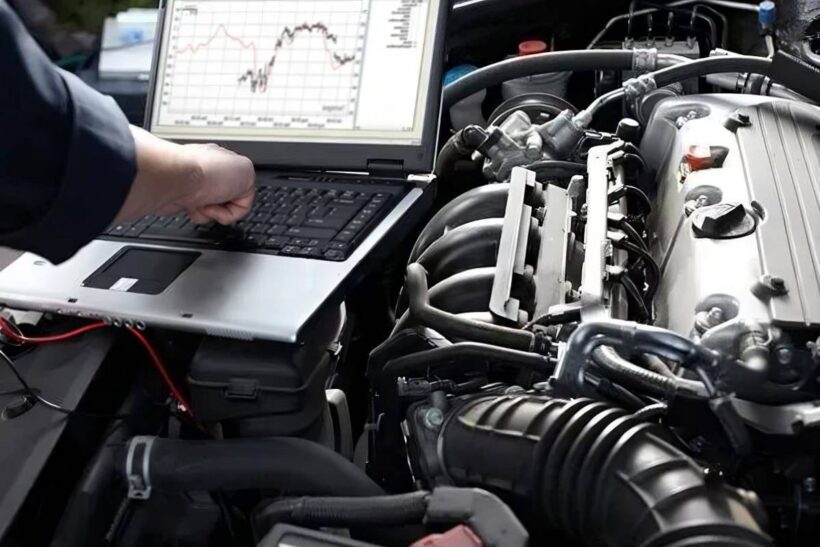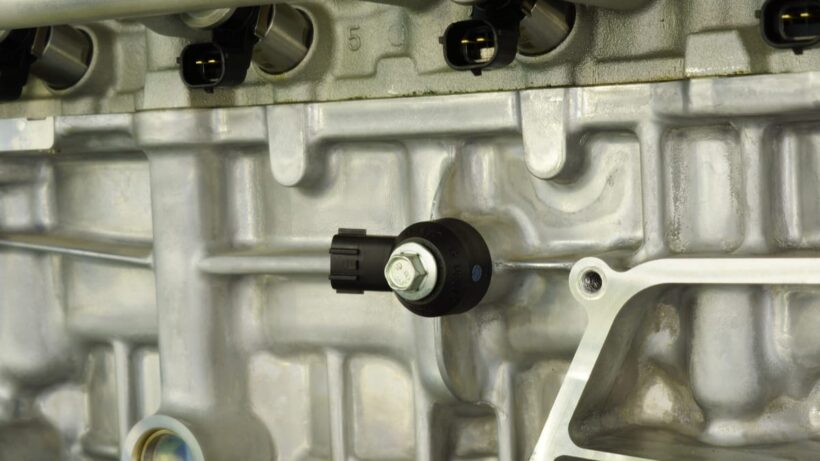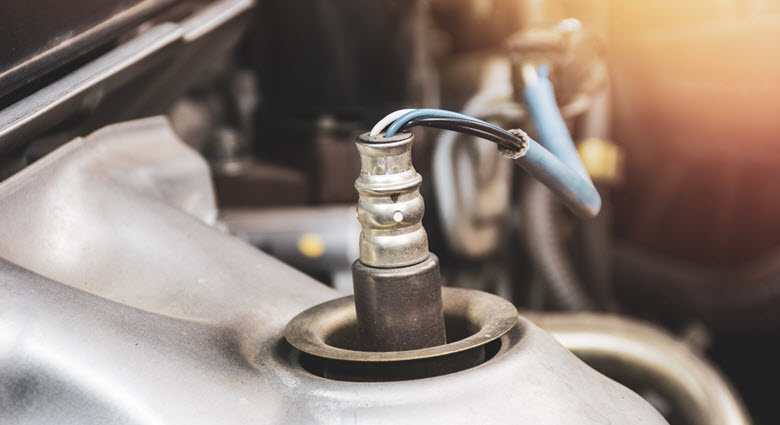Modern cars are equipped with an extensive array of sensors that play a pivotal role in ensuring optimal performance, efficiency, and safety. These sensors constantly monitor various aspects of the vehicle, providing valuable data to the onboard computer systems. This article aims to cover what you need to know about your car’s sensors, starting with the Exhaust Gas Temperature (EGT) sensor.
EGT Sensor: Enhancing Engine Performance and Efficiency

The EGT sensor stands as a critical component in the engine management system. Its primary function is to measure the temperature of exhaust gases as they exit the combustion chambers. Having a quality sensor in your car is important, and you can find an EGT sensor here to help optimize the air-fuel mixture, ignition timing, and other vital engine parameters. This information is important for maintaining engine efficiency, controlling emissions, and preventing damage to engine components. Typically, the EGT sensor is located near the exhaust manifold or turbocharger.
The EGT sensor operates on the principle that different exhaust gas temperatures indicate varying combustion efficiencies. By providing valuable data to the engine control unit (ECU), the EGT sensor enables adjustments to fuel injection, timing, and turbocharger boost pressure. Furthermore, the EGT sensor aids in diagnosing engine issues, such as a malfunctioning catalytic converter or a faulty fuel injector, by detecting abnormal temperature patterns.
In high-performance vehicles, EGT sensors become particularly essential as they allow drivers and tuners to monitor exhaust gas temperatures during aggressive driving or track sessions. By ensuring that EGT remains within safe limits, the risk of engine damage due to excessive heat can be minimized.
Mass Air Flow Sensor: Regulating Air Intake for Optimal Combustion

The Mass Air Flow (MAF) sensor is tasked with measuring the amount of air entering the engine. The MAF sensor calculates the mass of the air and relays this information to the engine control unit (ECU). The ECU then uses this data to determine the appropriate fuel injection timing and quantity, thereby achieving optimal combustion efficiency. A malfunctioning MAF sensor can result in poor engine performance, reduced fuel economy, and increased emissions.
The MAF sensor operates based on the hot wire or hot film principle. It employs either a heated wire or a heated film element positioned in the airflow path. As air flows over the element, it causes a change in the temperature of the element, leading to a change in electrical resistance.
It is important to note that MAF sensors can become contaminated over time, particularly in environments with high levels of airborne debris or oil vapor. This contamination can lead to inaccurate readings and affect engine performance. Regular maintenance, including cleaning or replacing the MAF sensor as necessary, is vital in ensuring optimal operation.
Oxygen Sensor: Optimizing the Air-Fuel Mixture for Efficient Combustion
Oxygen sensors, commonly referred to as O2 sensors, are responsible for monitoring the oxygen content in exhaust gases. They play a critical role in regulating the air-fuel mixture for optimal combustion. Most vehicles are equipped with both upstream and downstream O2 sensors. The upstream sensor measures the oxygen content before the catalytic converter, providing feedback to the ECU to adjust the fuel mixture. The downstream sensor ensures the efficiency of the catalytic converter by monitoring the exhaust gases after they have passed through the catalytic converter.
Oxygen sensors typically employ a ceramic element coated with a special material that reacts with oxygen. The sensor produces a voltage output based on the difference in oxygen concentration between the exhaust gas and ambient air. This voltage is sent to the ECU which adjusts the fuel injection duration based on the readings. By maintaining a precise air-fuel ratio, the O2 sensor helps optimize combustion, reduce emissions, and maximize fuel efficiency.
Over time, oxygen sensors can deteriorate or become contaminated, leading to inaccurate readings. This can result in decreased fuel economy, increased emissions, and reduced engine performance. It is recommended to follow the manufacturer’s guidelines regarding O2 sensor replacement intervals to ensure the continued proper functioning of the vehicle.
Throttle Position Sensor: Precise Control of Throttle Input

The Throttle Position Sensor (TPS) is responsible for monitoring the position of the throttle plate in the intake manifold. It sends a signal to the ECU informing it of the driver’s throttle input. This information helps the ECU determine the appropriate fuel injection and ignition timing. Additionally, the TPS contributes to smooth transmission shifts in vehicles equipped with automatic transmissions. A malfunctioning TPS can lead to poor throttle response, erratic idling, and reduced fuel efficiency.
The TPS comprises a variable resistor or a potentiometer that translates the position of the throttle plate into an electrical signal. As the throttle plate opens or closes, the resistance or voltage output from the TPS changes accordingly. The ECU uses this information to adjust the fuel injection timing and quantity for optimal performance.
When the TPS fails or becomes faulty, it can cause various issues, including hesitation during acceleration, rough idling, and even stalling. Regular inspection and maintenance of the TPS can help identify and rectify any problems, ensuring smooth engine operation.
Coolant Temperature Sensor: Monitoring Engine Temperature for Optimal Performance

The Coolant Temperature Sensor (CTS) serves the crucial role of monitoring the temperature of the engine coolant. This information is vital for the ECU to adjust fuel injection and ignition timing, especially during engine warm-up. The CTS also provides input to the vehicle’s temperature gauge on the instrument cluster, allowing the driver to monitor the engine’s operating temperature. If the CTS fails, it can result in improper fuel delivery, decreased performance, and potential engine damage due to overheating.
The CTS commonly employs a thermistor, which is a resistor whose electrical resistance changes with temperature. As the coolant temperature increases, the resistance of the thermistor decreases, and vice versa. The ECU reads this resistance and adjusts engine parameters accordingly.
A faulty CTS can lead to inaccurate temperature readings, which may cause the engine to run either too rich or too lean. This can result in decreased fuel efficiency, increased emissions, and potential engine overheating. Regular maintenance and inspection of the CTS are important to ensure accurate temperature monitoring and prevent any potential issues.
Wheel Speed Sensors: Ensuring Safe Braking and Traction Control

Wheel Speed Sensors (WSS) play an important role in modern anti-lock braking systems (ABS) and traction control systems (TCS). They measure the rotational speed of each wheel and provide real-time data to the ABS and TCS modules. By monitoring the speed of each wheel individually, these systems can detect wheel lock-up or loss of traction and adjust braking force or engine power accordingly. WSS also enables other safety features like electronic stability control (ESC).
The Wheel Speed Sensor typically comprises a toothed ring mounted on the wheel hub and a magnetic sensor positioned nearby. As the wheel rotates, the teeth on the ring pass by the sensor, generating an electrical signal. The frequency of this signal corresponds to the wheel speed, which is used by the ABS, TCS, and ESC systems to maintain vehicle stability and control.
Failure or malfunctioning of WSS can lead to compromised braking performance, increased stopping distances, and reduced stability during maneuvers. Regular inspection and maintenance of the WSS, including checking for any damaged or missing teeth on the ring are important in ensuring their proper operation.
Knock Sensor: Safeguarding Against Detonation and Engine Damage

The Knock Sensor serves as a guardian against engine knocking or pinging caused by uncontrolled combustion in the cylinders. It listens for vibrations that indicate the presence of detonation and sends a signal to the ECU. In response, the ECU adjusts ignition timing to prevent knocking, preserving engine performance and preventing damage.
The Knock Sensor is typically mounted on the engine block or cylinder head, where it can detect the vibrations generated by engine knocking. It utilizes a piezoelectric element or a resonant frequency principle to convert the vibrations into electrical signals that are then interpreted by the ECU.
Regular maintenance and inspection of the Knock Sensor are essential to ensure its effectiveness in detecting engine knocking. Using high-quality fuel with the recommended octane rating can help minimize the occurrence of detonation and reduce stress on the knock sensor.


